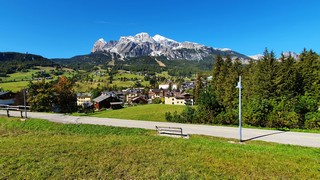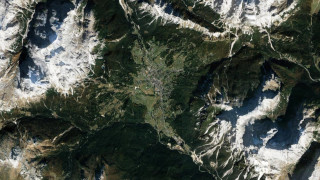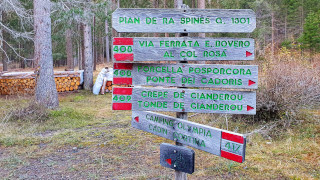Introduction
Cortina d'Ampezzo is a dream for mountain bike lovers. If you like cycling in the middle of nature, you will find plenty of trails, both asphalt and dirt roads, that will delight you. Whether you want to go on relaxing bike rides with the family or you are looking for the adrenaline of the steepest descents, let's discover together what Cortina has to offer cycling lovers!
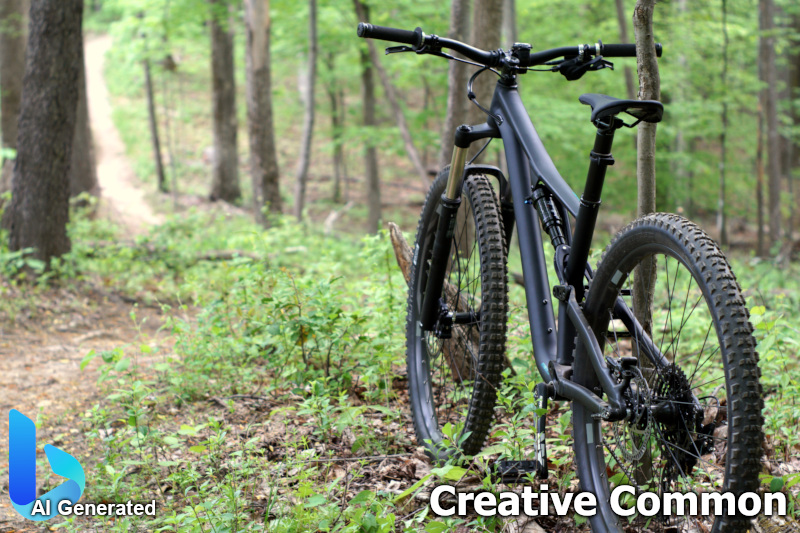
The former railway
The easier bike trail for both novice cyclists and families with kids is, for sure, the former railway. It is a cycle and pedestrian route that cuts across Cortina for its entire length, with various access points throughout the town.
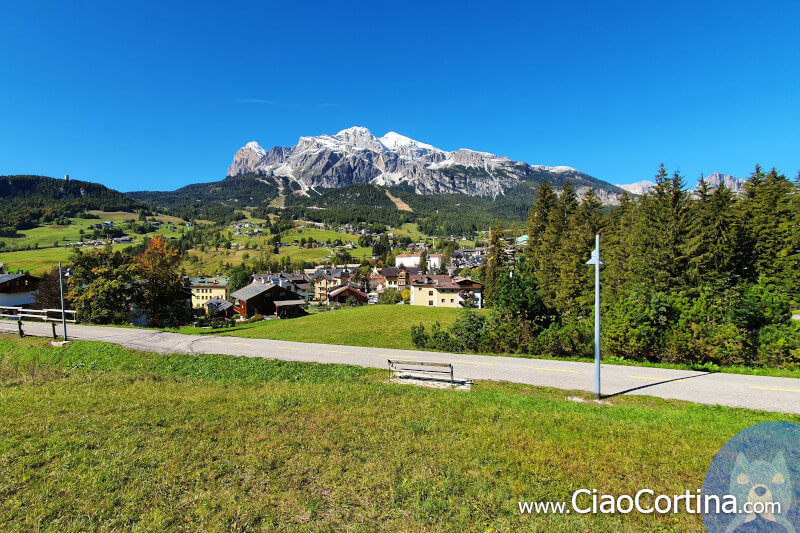
If you have small kids or zero training, you should go north, in the direction of "Cimabanche," to start uphill and be able to turn around and go back downhill whenever you want. At a certain point, the road becomes white gravel, but there are a few kilometers of asphalt if you start from the town center.

If you have a gravel bike or a mountain bike, going north is also the best decision. Continuing after Fiames, you will cross a train tunnel and a bridge, which makes the route more dynamic and enjoyable. Even if it's a simple route, it is slightly uphill, and since there is no real arrival point, it could also become quite long. A pedal-assisted bike might be a good idea.
If you decide to go south, towards "Zuel," the road will be paved, all downhill, and really scenic. On the way back, you will have to face a light and constant climb, but it will never be too exhausting. If you want more information, we discuss it further in the page below:
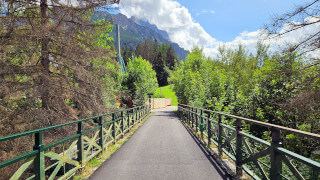
 Help us stay ad-free with a small offer.Donate now!
Help us stay ad-free with a small offer.Donate now!
The Toblach Lienz
If you are willing to leave Cortina, the most popular family route is the "Toblach-Lienz" cycle path. It is a 49-kilometer, 30-mile route with intermediate stops, almost completely downhill, and with a return by train. It's really popular, so they are perfectly organized.

You can reach "Toblach" with your car, rent a bike, then cycle to "Lienz," return the bicycle at the station, and take the train to return to "Toblach." If you want to use your bike, the train is equipped to board your bicycle.
The price of a bike rental and train should be around €35 per person. For more information, you could consult this section of the official website of "Val Pusteria," but it's only in Italian and German.
The "Lunga via" of the Dolomites
Let's discover together the most known and popular bike path: the "Lunga Via" of the Dolomites. It is often translated as The Long Way of the Dolomites, but we prefer to keep the Italian name.
The former railway of Cortina, which we described in the previous chapter, is a part of this long road that has been built along the route of the former railway that connected "Calalzo di Cadore" to "Toblach."
This bicycle path, which crosses the Ampezzo Dolomites and continues along the "Val Boite," is one of the most scenic bicycle routes in the entire Alpine region.

This route is a part of the bicycle road that connects "München" to Venice and is considered the world's most beautiful bicycle trail. It winds for five hundred and sixty kilometers, or three hundred and fifty miles, through three countries.
The alpine part of the "Lunga Via" of the Dolomites is a former railway, so it is really easy. The gradient is very slight and there are no sharp turns. It is ideal for those with children or for those looking for a road within everyone's reach.

The "Lunga Via" can be cycled all year, but the perfect moment is during the summer. During the months from June to September there is also an equipped bus, called train bus of the Dolomites, where you can load your bike and make the outward or return journey without cycling. For more information, or to purchase tickets, you can contact the Cortina bus station ticket office. You can also get a lot of useful information on this official PDF about the Dolomites train bus.
The most popular variant, for those who have a car or plan to take the train bus, is the one that starts from the "Cimabanche" Pass down to "Calalzo di Cadore." Following this trail it is possible to cycle for fifty kilometers, thirty miles, almost completely downhill, on a road completely closed to motorized traffic.

The road is always well signposted, its surface is divided into thirty kilometers, or eighteen miles, of paved road and twenty kilometers, or twelve miles, of white gravel road, mainly concentrated near "Cimabanche." The former railway is also open to pedestrians, so you have to be careful of people walking along the road, especially in urban areas.
 Help us stay ad-free with a small offer.Donate now!
Help us stay ad-free with a small offer.Donate now!
Mountain bike
There are dozens of breathtaking trails that cross our mountains. If you want to discover the most beautiful itineraries you should consult this fantastic map of all the mountain bike trails in Cortina. This map has been created by Cortina Marketing and it's really complete, even though a bit concise. If you'd like to consult it in paper version, you can grab a copy at the tourist Information Office, in Corso Italia.
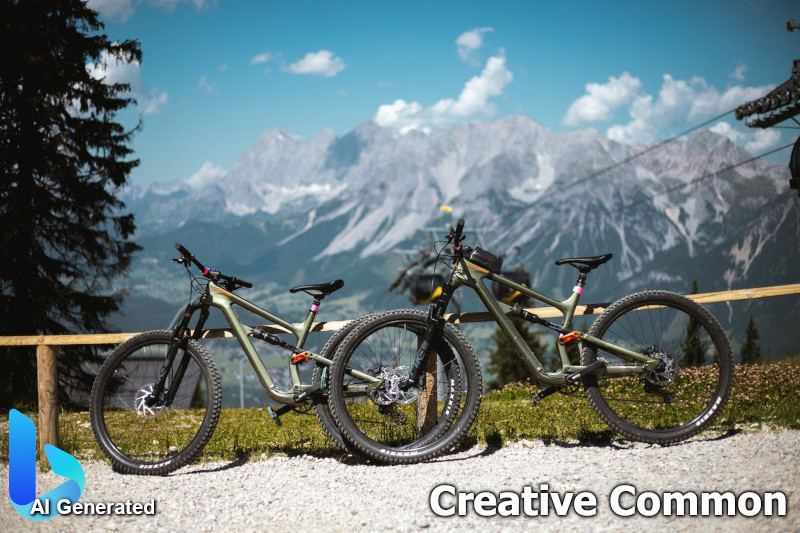
We promised ourselves that we would describe our favourite mountain bike routes in detail, but for the moment we are very focused on the best hikes. Considering the limited time we have, we are forced to leave you with the promise that, in the future, we'll write about the best bike trails with the dedication they deserve.
 Help us stay ad-free with a small offer.Donate now!
Help us stay ad-free with a small offer.Donate now!
Downhill
Downhill is a growing discipline and Cortina is the perfect location to practice it. The area that is most friendly to this sport is Mount "Tofane." To increase the users in summer the two companies that manage the area decided to create the Cortina Bike Park Dolomiti. It is a downhill park that includes over twenty two kilometers, or fourteen miles, of equipped trails, suitable for everyone, from beginners to skilled riders.
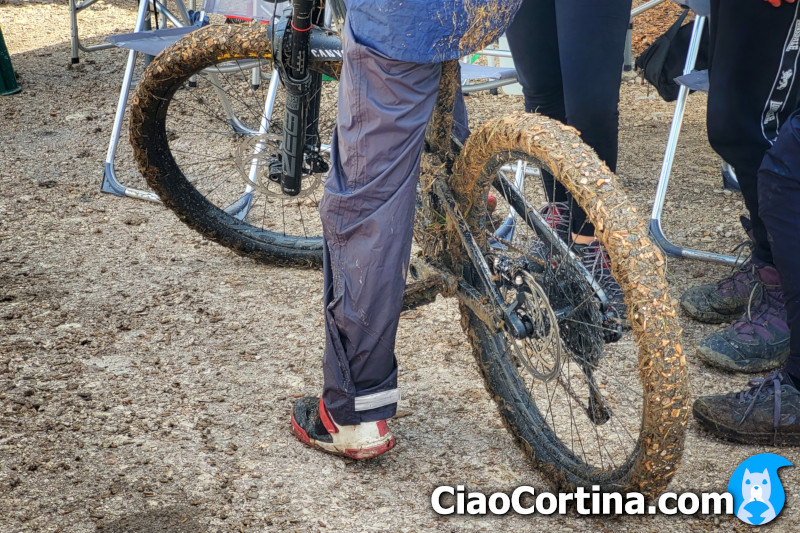
As proof of the quality of the park, in 2023, the location was selected to host the "Coppa Italia Downhill," the most important Italian race. We had the pleasure of assisting, taking the photographs you can see in this chapter.
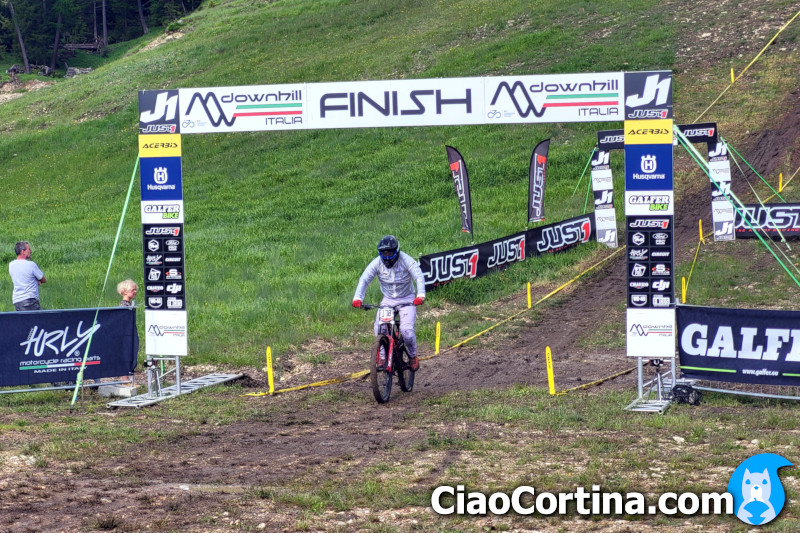
If you love this sport you can buy the Cortina Bike Pass. It is a ticket that allows you to use all the ski lifts, that are equipped for bike transport, in the summer season. For more information or to purchase the ticket online, please visit the official website of the Dolomiti Bike Park.
 Help us stay ad-free with a small offer.Donate now!
Help us stay ad-free with a small offer.Donate now!
Renting the equipment
If you haven't brought your bicycle with you, or if you want to try a pedal assisted e-bike, you can go to one of the many rentals in Cortina. We always recommend booking you bike, preferably sooner than later.
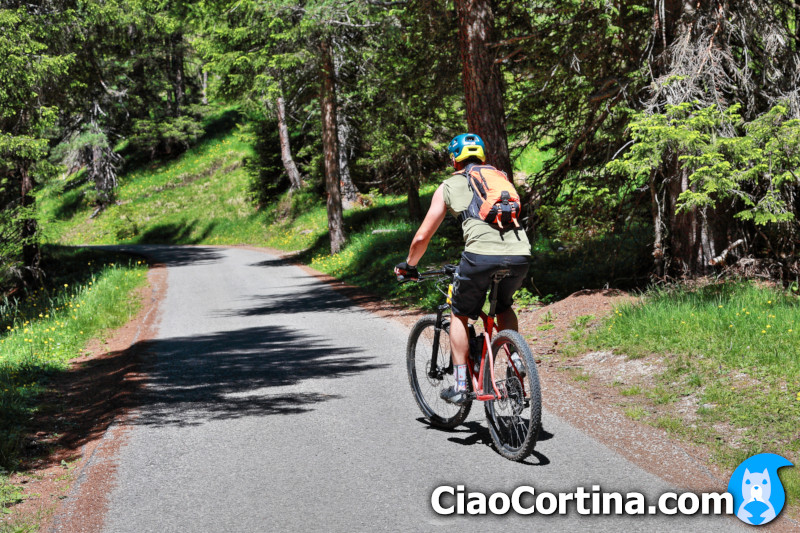
If you are an expert cyclist, an idea that you may not have considered is to rent an e-bike for an eventual companion, so that you can ride together, using the motor to compensate for your partner's lack of training.
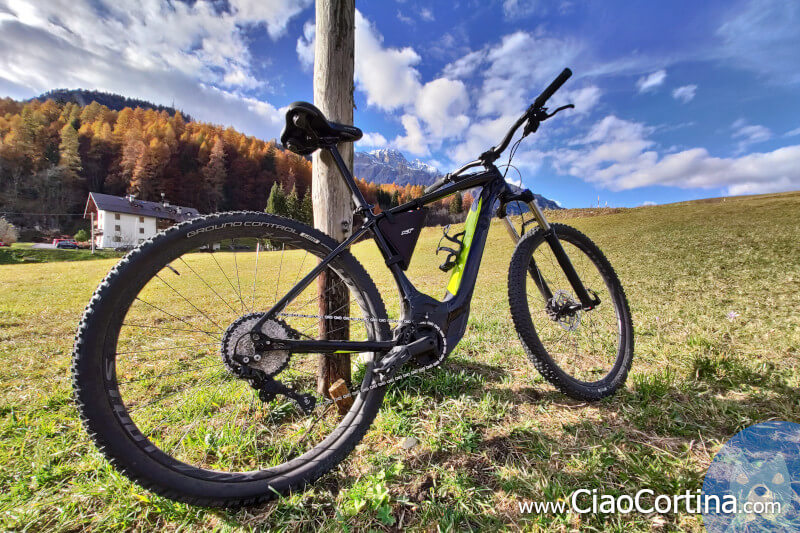
In this case, avoid too technical routes, as motorized bicycles are heavy and more difficult to steer and stop downhill, especially by those with little experience.
 Help us stay ad-free with a small offer.Donate now!
Help us stay ad-free with a small offer.Donate now!
Some recommendations
Let's start with a premise: the mountain is unpredictable, because summer storms are very common. They are usually more likely in the afternoon, especially on the hottest and most humid days. Thunderstorms are associated with sudden drops in temperature, for this reason it's better to ride your bike in the morning and always bring a waterproof and windproof jacket, to avoid surprises.
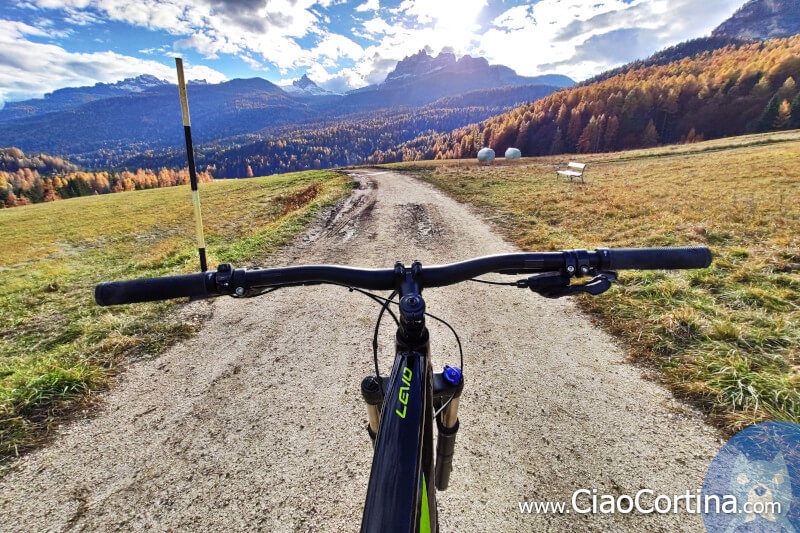
You have to consider that temperatures, in high mountains, are generally lower. If you are planning a vacation in May or September, you would expect to find warm weather, but that's not so obvious. Always bring mid-season clothing, as well as light clothing. Even the sun could be sneaky, fresh mountain breeze might make you forget that, above two thousand meters, OR six thousand feet, the sun is notorious for burning, so you should always use sunscreen.
... once you have exceeded six thousand feet oxygen begins to thin out...
Cycling at high altitude is very demanding. Once you have exceeded two thousand meters, OR six thousand feet, oxygen begins to thin out, with the risk of being more fatigued than expected.
Remember that, in the mountains, it may not be possible to be rescued quickly, so we recommend that you always carry with you your phone, a pump, an inner tube, a Multi-Tool for repairs and a mini first aid kit. It might be helpful to also have some electrician's clamps for minor repairs, as well as a trail map.
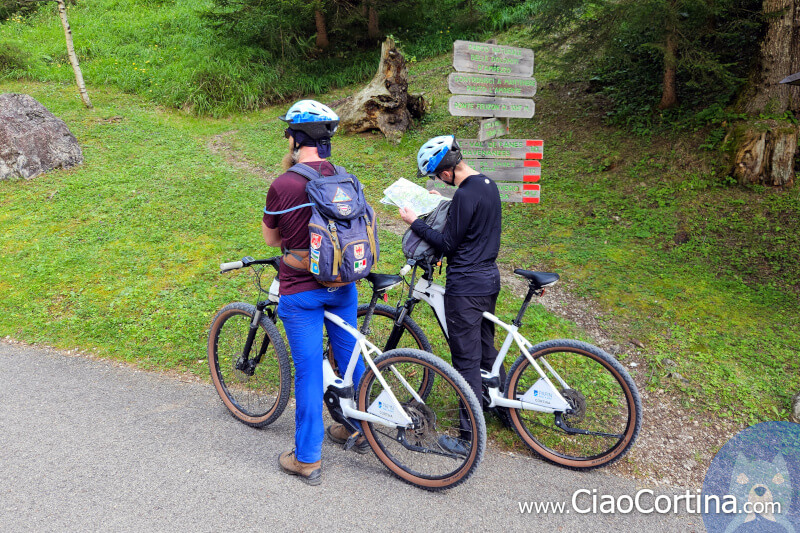
If you're new to mountain biking, don't underestimate the difficulty: a trail that is tackled fairly easily on foot, on a mountain bike might prove to be challenging to climb and difficult to descend, because of the roughness of the terrain, which requires some experience to handle. Try to start on simply dirt roads, such as those leading to mountain lodges, before trying to go down a trail filled with roots.
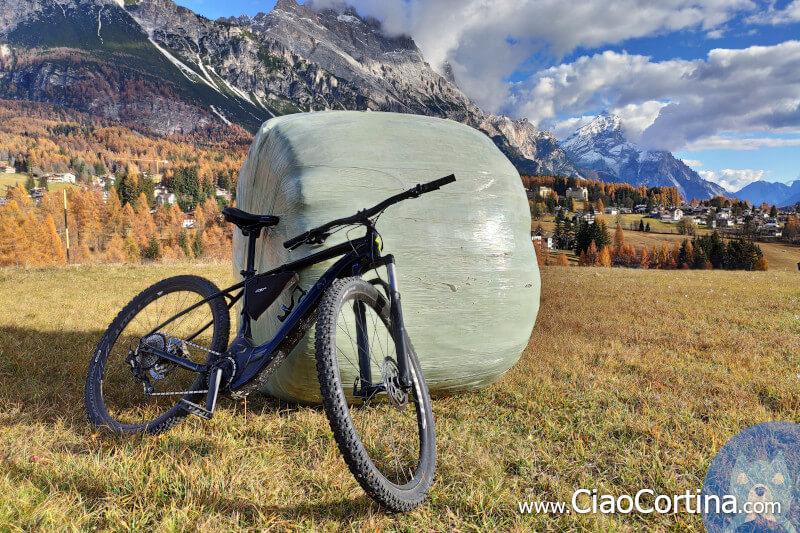
Always remember that the trails, in Cortina, are not exclusive to bicycles, there are also hikers and you may run the risk of running them over, so use your head and go slowly.
Conclusion
We hope you liked this page on cycling and mountain biking in Cortina d'Ampezzo. Before saying goodbye, we would suggest you read our home page, with all the articles we wrote about Cortina d'Ampezzo.
If you want to thank us you can read the page Support us. If you only want to suggest a change, propose something or just say hello, in the section contacts and info, you'll find all the ways to reach us.
